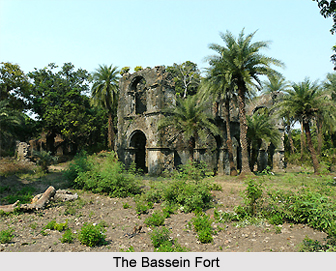 History of Satna district forms a part of the history of the region known as Baghelkhand, a very large portion of which was ruled by the rulers of the Rewa District, while the feudatory chiefs, holding their states under the British East India Company, ruled a small part towards the West. The "Sanads"( a government deed granted to the princely states of India confirming them in their states, in return for their allegiance) are eleven in all and the important ones include Maihar, Kothi, Nagod (Princely State of Nagod), Jaso (Princely State of Jaso), Baraundha and Sohawal and the five "Chaube" Jagirs of Paldeo, Taraon, Pahra, Kamta-Rajula and Bhaisundha.
History of Satna district forms a part of the history of the region known as Baghelkhand, a very large portion of which was ruled by the rulers of the Rewa District, while the feudatory chiefs, holding their states under the British East India Company, ruled a small part towards the West. The "Sanads"( a government deed granted to the princely states of India confirming them in their states, in return for their allegiance) are eleven in all and the important ones include Maihar, Kothi, Nagod (Princely State of Nagod), Jaso (Princely State of Jaso), Baraundha and Sohawal and the five "Chaube" Jagirs of Paldeo, Taraon, Pahra, Kamta-Rajula and Bhaisundha.
Early History of Satna District
The early Buddhist texts written in Pali Langauge, the Mahabharata, etc, connect the Baghelkhand tract with rulers of the Haihaya, Kalchuris or Chedi clan, who are believed to have gained considerable importance sometime in the third century A.D. Their original habitat is placed on the Narbada with Mahishmati (identified by some with Maheshwar in west Nimar district) as the capital; from where they seem to have been driven eastwards. They had acquired the fort of Kalinjara (some miles beyond the border of Satna district, in Uttar Pradesh), and with this as base, they extended their dominions over Baghelkhand. In the fourth and fifth centuries, the rulers of Gupta empire of Magadha was paramount over this region as is shown by the records of the feudatory chiefs of Uchchakalpa and the Parivrajak Rajas of Kot. The main stronghold of the Chedi clan was Kalinjara, and their proudest title was Kalanjaradhishwara (Lord of Kalanjar). The Kalchuris received their first blow at the hand of chief of Chandella dynasty, Yashovarmma, who seized the fort of Kalinjar and the tract surrounding it. The Kalchuris were still a powerful tribe and continued to hold most of their possessions until the twelfth century.
Medieval History of Satna District
The chiefs of Rewa District were Baghel Rajputs who descended from the Solanki dynasty, which ruled over Gujrat from the tenth to the thirteenth century. Vyaghra Deo, brother of the ruler of Gujrat, is said to have made his way into the northern parts of India about the middle of the thirteenth century and obtained the fort of Marpha, eighteen miles to the northeast of Kalinjar. His son Karandeo married a Kalchuri princess of Mandla and received in dowry the fort of Bandhogarh, which, until its destruction in the year 1597 by Akbar, was the Baghel Capital.
In the year 1298, Ulugh Khan, following the orders of Emperor of Delhi sultanate Ala-ud-din Khilji, drove the last Baghel ruler of Gujrat from his country and this is believed to have caused a considerable migration of the Baghels to Bandhogarh. Until the fifteenth century the Baghels of Bandhogarh were engaged in extending their possessions and escaped the attention of the Delhi Sultans. In 1498-99, Sikandar Lodi failed to take the fort of Bandhogarh. The Baghel king Ramchandra was a contemporary of Mughal Emperor Akbar. Tansen, the great musician, was in the court of Ramchandra and from there Akbar summoned him to his court. After the death of Birdhabra, Ramchandra`s son, a minor named Vikramaditya ascended the throne of Bandhogarh and his accession gave rise to disturbances. Akbar intervened, captured, and dismantled the Bandhogarh fort in the year 1597 after seizing for eight months. After that, the town of Rewa started gaining in importance.
Modern History of Satna District
In the year 1803, after the Treaty of Bassein, the British made overtures of alliance to the ruler of Rewa, but the latter rejected them. In the year 1812, during the time of Raja Jaisingh, a body of Pindaris raided Mirzapur District from Rewa territory. Upon this Jaisingh was called upon to accede to a treaty, in which he acknowledged the protection of the British Government, and agreed to refer all disputes with neighbouring chiefs to their arbitration and to allow British troops to march through or be cantoned in his territories. In the great Sepoy Mutiny of 1857, Maharaja Raghuraj Singh helped the British in quelling the uprisings in the neighbouring Mandla district and Jabalpur district, and in Nagod, which is now a part of Satna district. For this, the king was rewarded by the restoration of the Sohagpur (Shahdol District) and Amarkantak parganas, which had been seized by the Marathas in the beginning of the century. The rulers of Rewa State bore the title of `His Highness` and `Maharaja` and received a salute of seventeen guns. Most of the Raghuraj Nagar and entire Amarpatan tehsil of the present Satna district were in the Rewa State prior to the formation of Vindhya Pradesh.



















